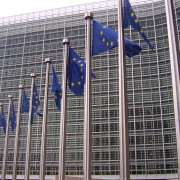COMMISSION IMPLEMENTING REGULATION (EU) 2018/1917
of 6 December 2018
concerning the non-renewal of approval of the active substance flurtamone, in accordance with Regulation (EC) No 1107/2009 of the European Parliament and of the Council concerning the placing of plant protection products on the market, and amending Commission Implementing Regulation (EU) No 540/2011
(Text with EEA relevance)
THE EUROPEAN COMMISSION,
Having regard to the Treaty on the Functioning of the European Union,
Having regard to Regulation (EC) No 1107/2009 of the European Parliament and of the Council of 21 October 2009 concerning the placing of plant protection products on the market and repealing Council Directives 79/117/EEC and 91/414/EEC, and in particular Article 20(1) and Article 78(2) thereof,
Whereas:
|
(1) |
Commission Directive 2003/84/EC included flurtamone as an active substance in Annex I to Council Directive 91/414/EEC. |
|
(2) |
Active substances included in Annex I to Directive 91/414/EEC are deemed to have been approved under Regulation (EC) No 1107/2009 and are listed in Part A of the Annex to Commission Implementing Regulation (EU) No 540/2011 . |
|
(3) |
The approval of the active substance flurtamone, as set out in Part A of the Annex to Implementing Regulation (EU) No 540/2011, expires on 31 October 2019. |
|
(4) |
An application for the renewal of the approval of flurtamone was submitted in accordance with Article 1 of Commission Implementing Regulation (EU) No 844/2012 within the time period provided for in that Article. |
|
(5) |
The applicant submitted the supplementary dossiers required in accordance with Article 6 of Implementing Regulation (EU) No 844/2012. The application was found to be complete by the rapporteur Member State. |
|
(6) |
The rapporteur Member State prepared a renewal assessment report in consultation with the co-rapporteur Member State and submitted it to the European Food Safety Authority (‘the Authority’) and the Commission on 29 May 2015. |
|
(7) |
The Authority communicated the renewal assessment report to the applicant and to the Member States for comments and forwarded the comments received to the Commission. The Authority also made the supplementary summary dossier available to the public. |
|
(8) |
On 10 August 2017 the Authority communicated to the Commission its conclusion on whether flurtamone can be expected to meet the approval criteria provided for in Article 4 of Regulation (EC) No 1107/2009. |
|
(9) |
The Autority identified specific concerns. In particular, it concluded that it is not possible to exclude the mutagenic potential of flurtamone based on the available information and that no final health-based reference values could be set. Consequently, the Authority concluded that the consumer and non-dietary risk asessements could not be conducted. In addition, the Authority concluded that the overall consumer risk assessment for exposure to metabolite trifluoroacetic acid, predicted to occur in groundwater in all pertinent scenarios and as a residue in plants, could not be finalised due to a number of deficiencies in the dossier. Furthermore, the Authority concluded that the assessment of endocrine disrupting properties could not be completed based on the available studies. |
|
(10) |
The Commission invited the applicant to submit its comments on the conclusion of the Authority and, in accordance with the third subparagraph of Article 14(1) of Implementing Regulation (EU) No 844/2012, on the draft renewal report. The applicant submitted its comments, which have been carefully examined. |
|
(11) |
However, despite the arguments put forward by the applicant, the concerns regarding the active substance could not be eliminated. |
|
(12) |
Consequently, it has not been established with respect to one or more representative uses of at least one plant protection product that the approval criteria provided for in Article 4 of Regulation (EC) No 1107/2009 are satisfied. It is therefore appropriate not to renew the approval of the active substance flurtamone in accordance with Article 20(1)(b) of that Regulation. |
|
(13) |
Implementing Regulation (EU) No 540/2011 should therefore be amended accordingly. |
|
(14) |
Member States should be provided with sufficient time to withdraw authorisations for plant protection products containing flurtamone. |
|
(15) |
For plant protection products containing flurtamone, where Member States grant any grace period in accordance with Article 46 of Regulation (EC) No 1107/2009, that period should, at the latest, expire on 27 March 2020. |
|
(16) |
Commission Implementing Regulation (EU) 2018/1262 extended the expiry date of flurtamone to 31 October 2019 in order to allow the renewal process to be completed before the expiry of the approval of that substance. However, given that a decision has been taken ahead of that extended expiry date, this Regulation should apply as soon as possible. |
|
(17) |
This Regulation does not prevent the submission of a further application for the approval of flurtamone pursuant to Article 7 of Regulation (EC) No 1107/2009. |
|
(18) |
The measures provided for in this Regulation are in accordance with the opinion of the Standing Committee on Plants, Animals, Food and Feed, |
HAS ADOPTED THIS REGULATION:
Article 1
Non-renewal of approval of active substance
The approval of the active substance flurtamone is not renewed.
Article 2
Amendment to Implementing Regulation (EU) No 540/2011
In Part A of the Annex to Implementing Regulation (EU) No 540/2011, row 64, on flurtamone, is deleted.
Article 3
Transitional measures
Member States shall withdraw authorisations for plant protection products containing flurtamone as active substance by 27 June 2019 at the latest.
Article 4
Grace period
Any grace period granted by Member States in accordance with Article 46 of Regulation (EC) No 1107/2009 shall be as short as possible and shall expire by 27 March 2020 at the latest.
Article 5
Entry into force
This Regulation shall enter into force on the twentieth day following that of its publication in the Official Journal of the European Union.
This Regulation shall be binding in its entirety and directly applicable in all Member States.
Source: EU Pesticides database


